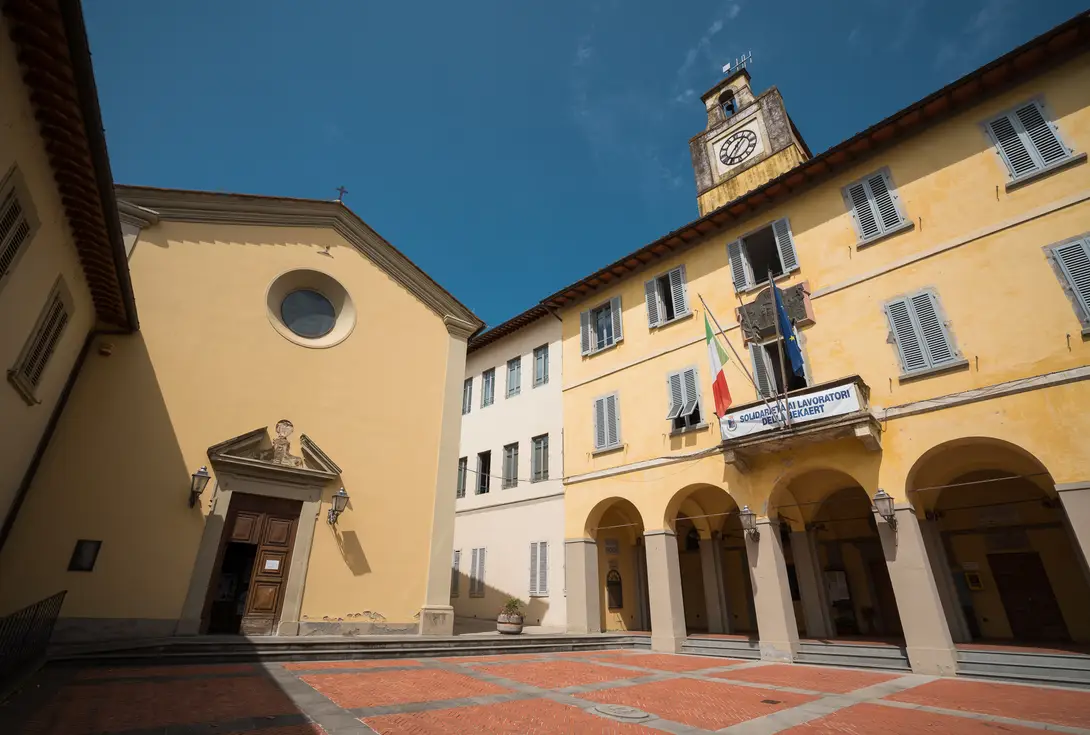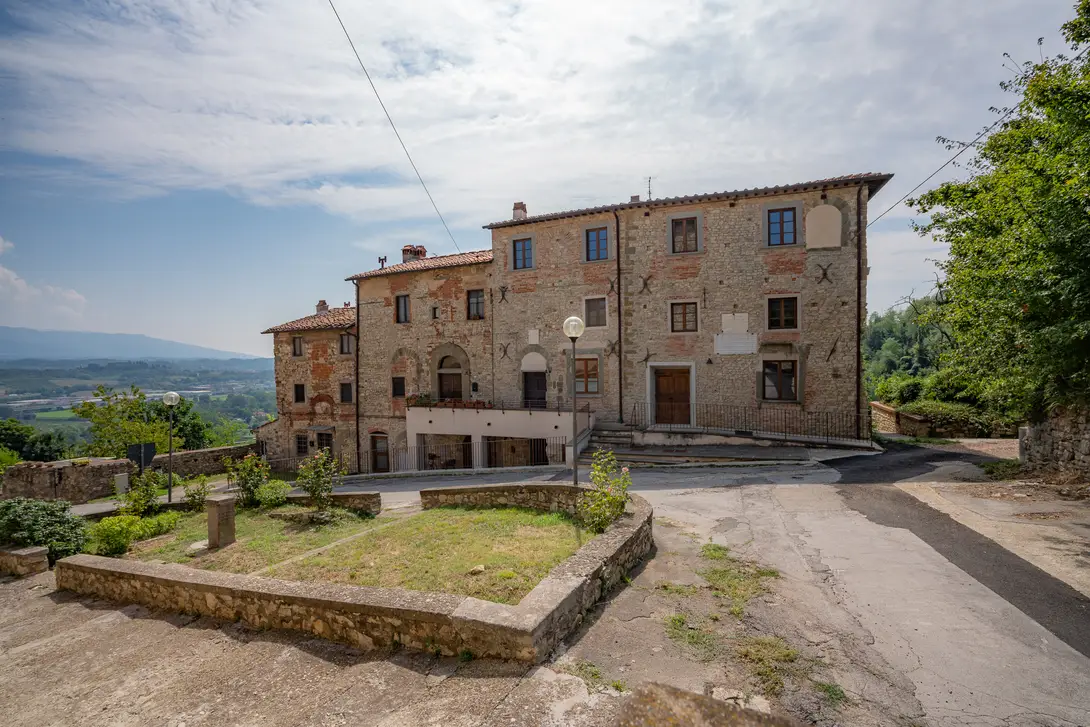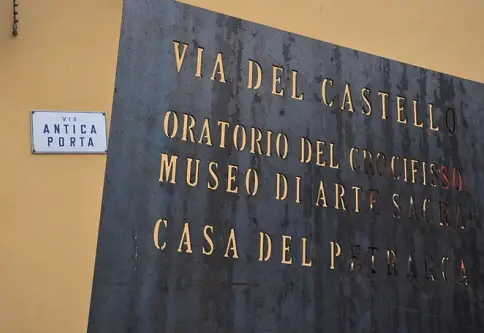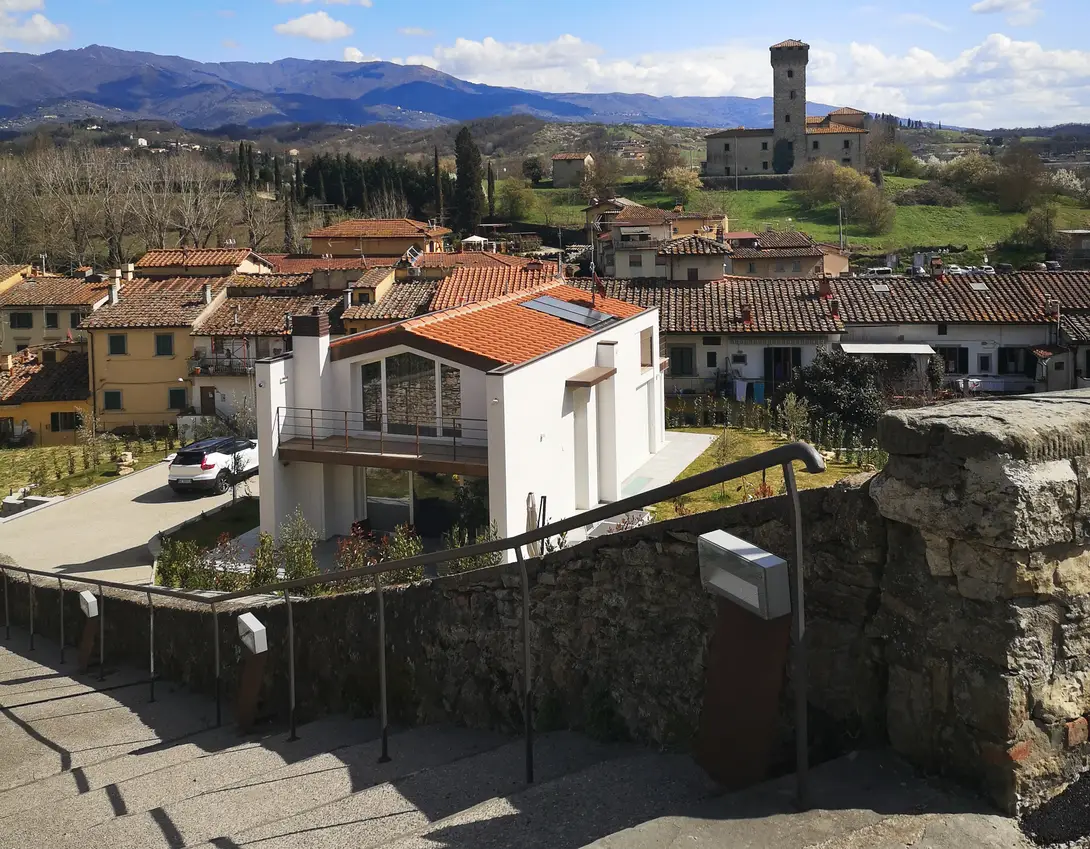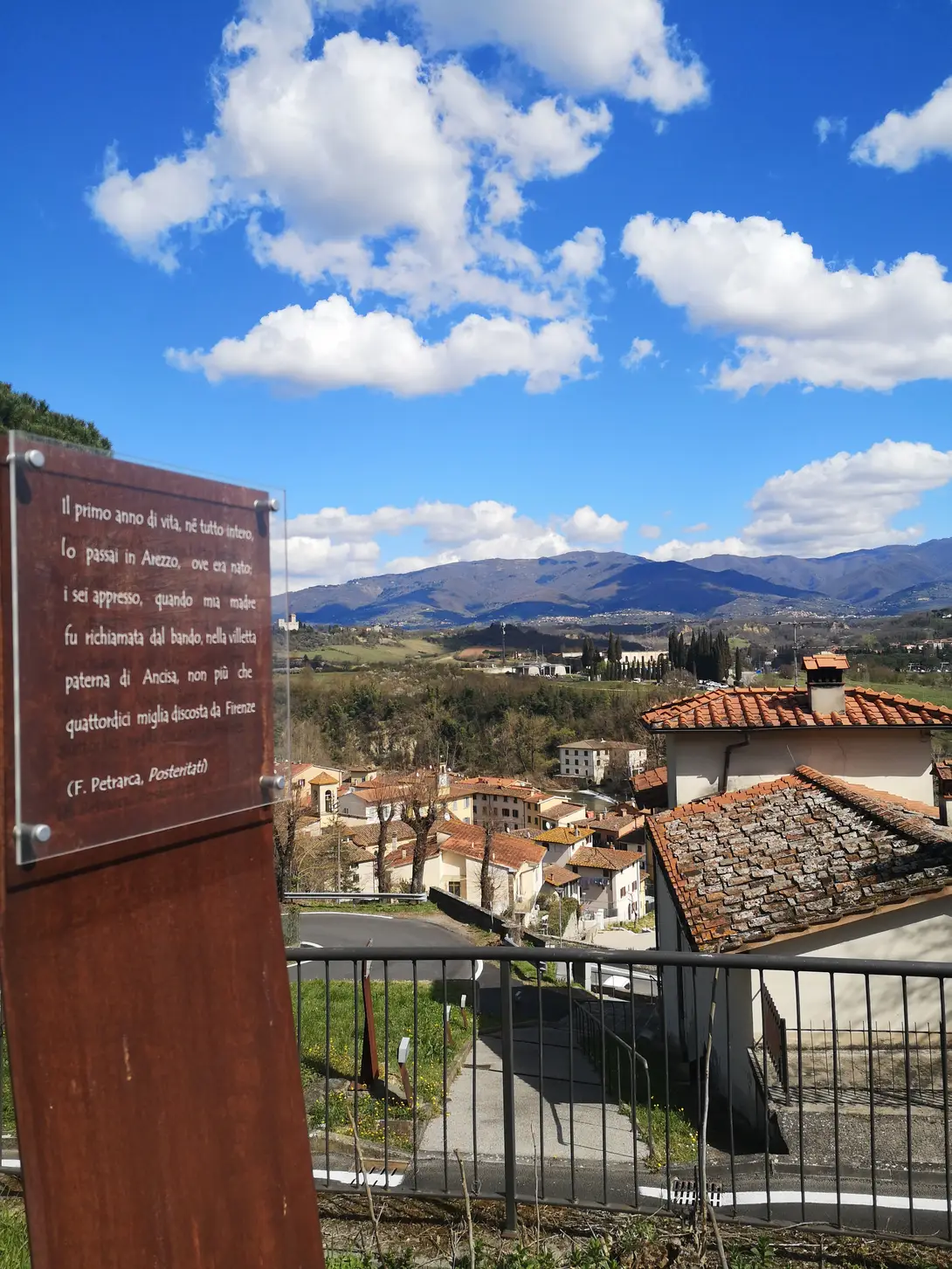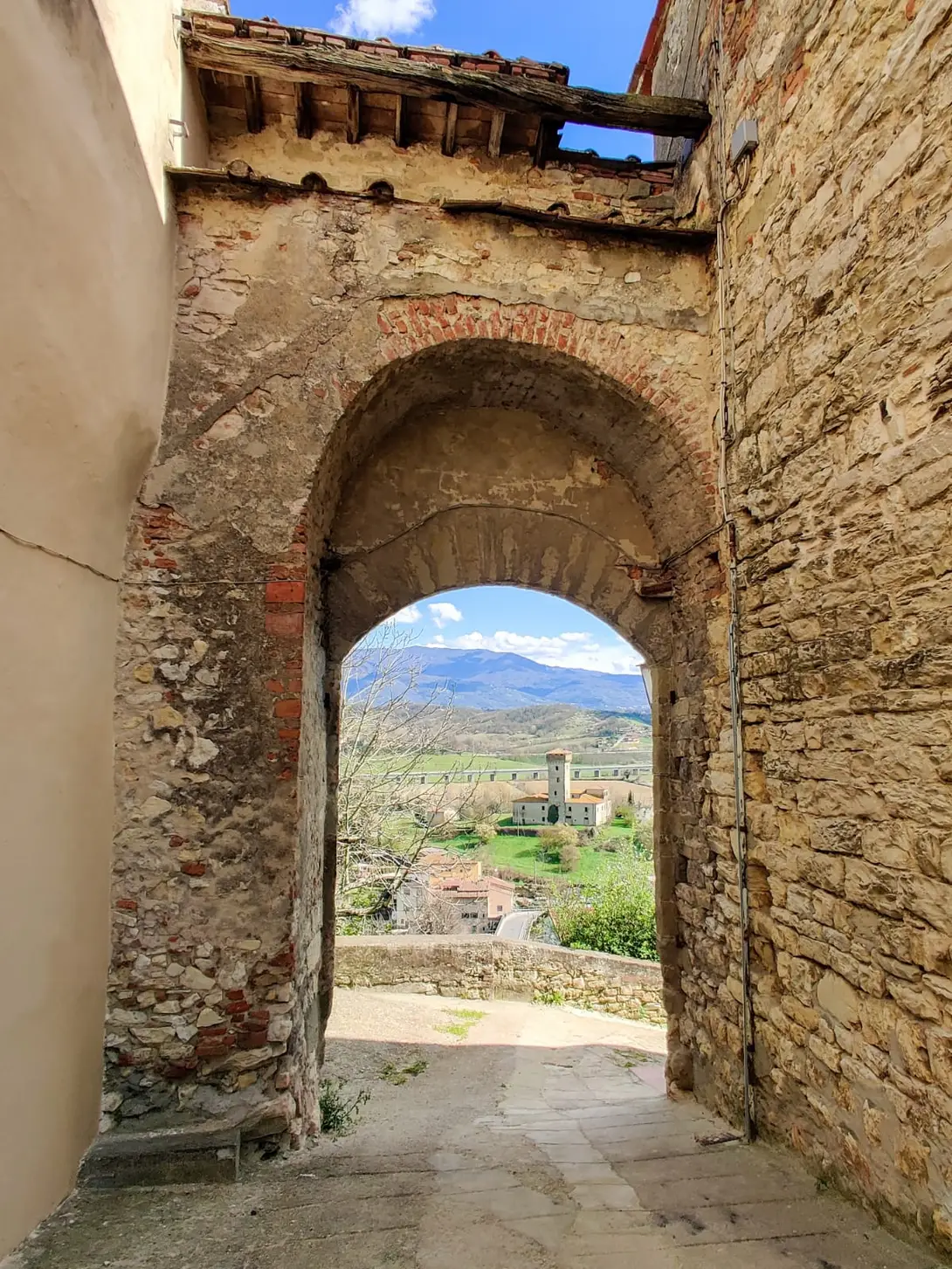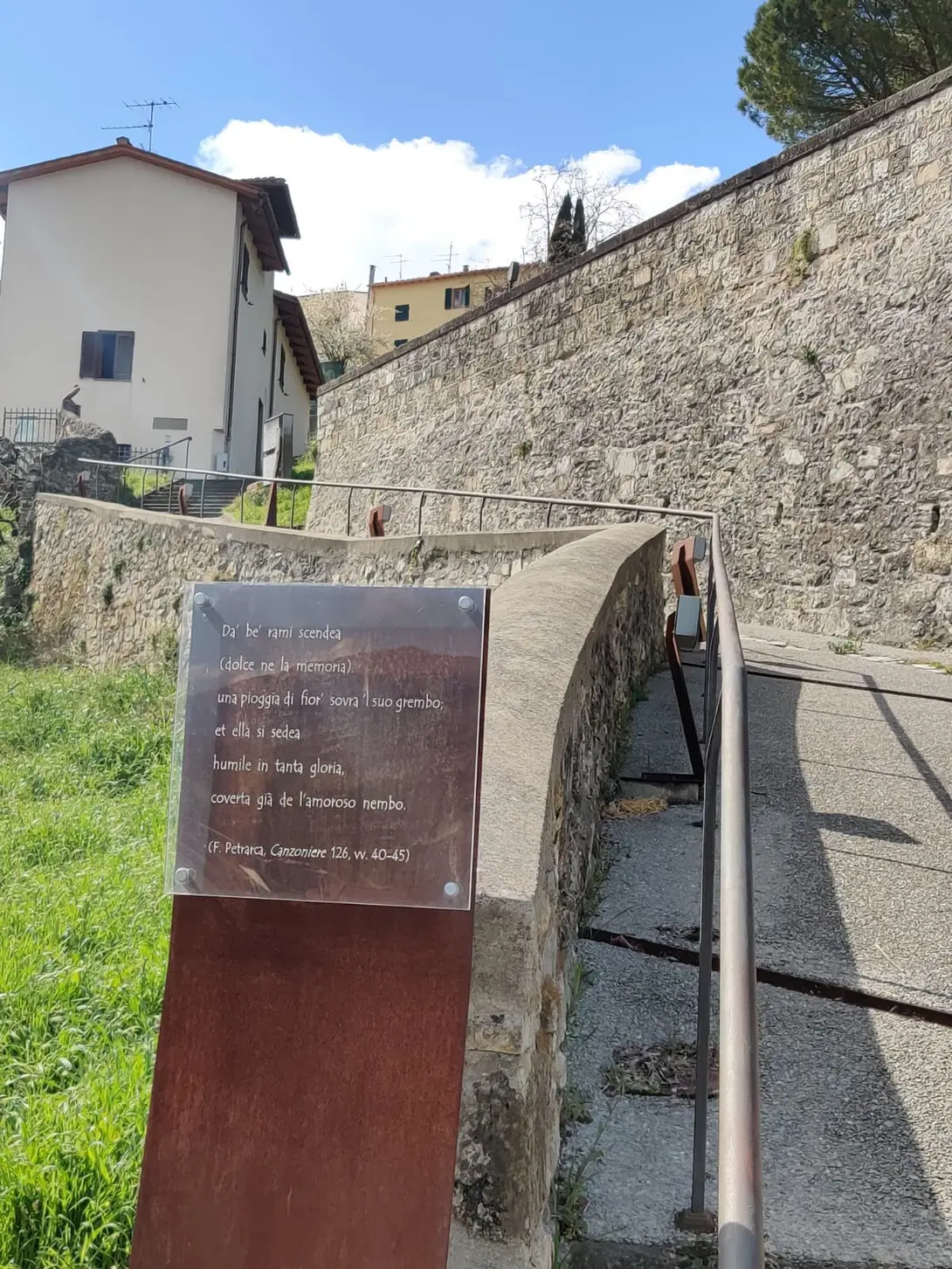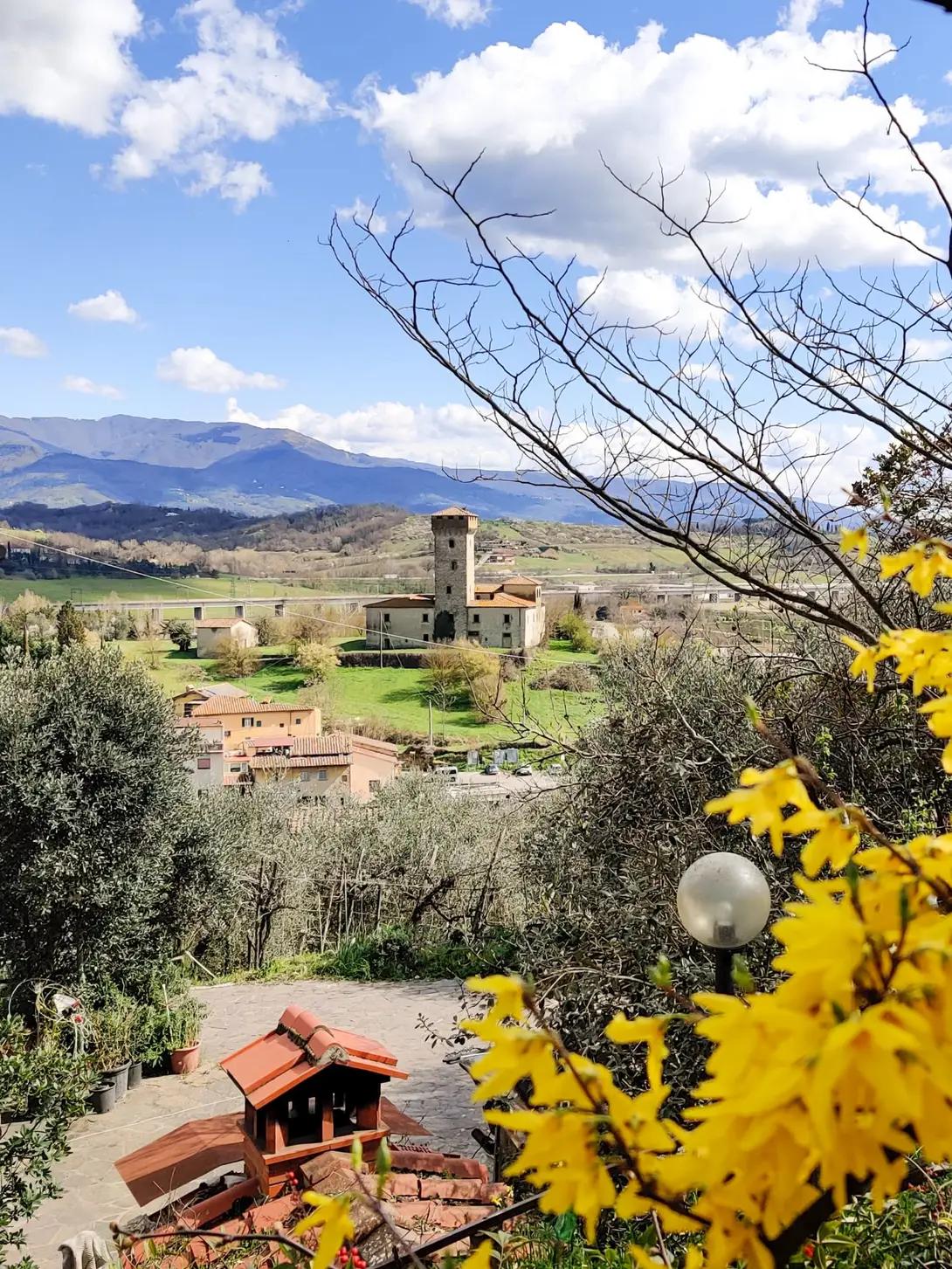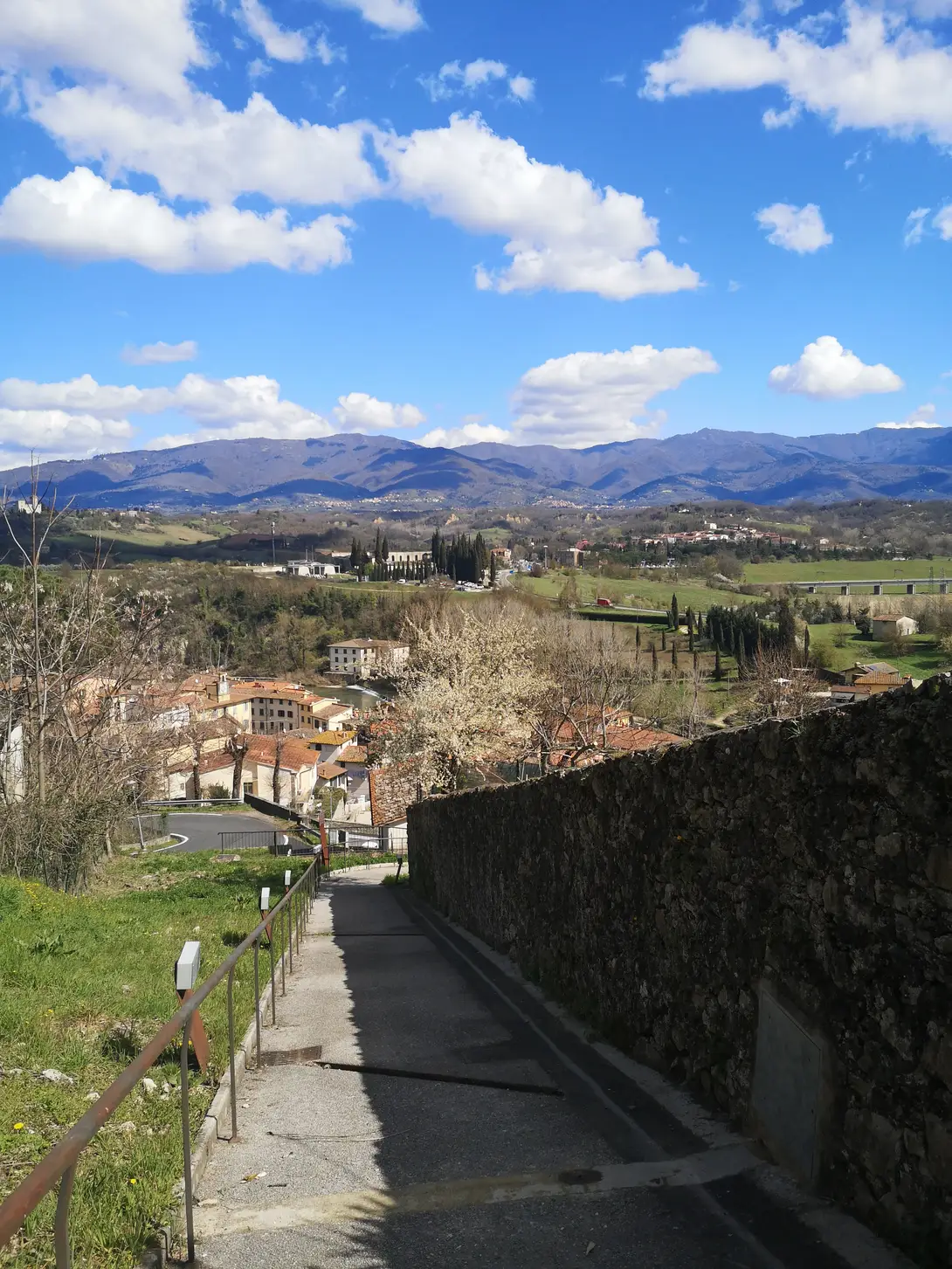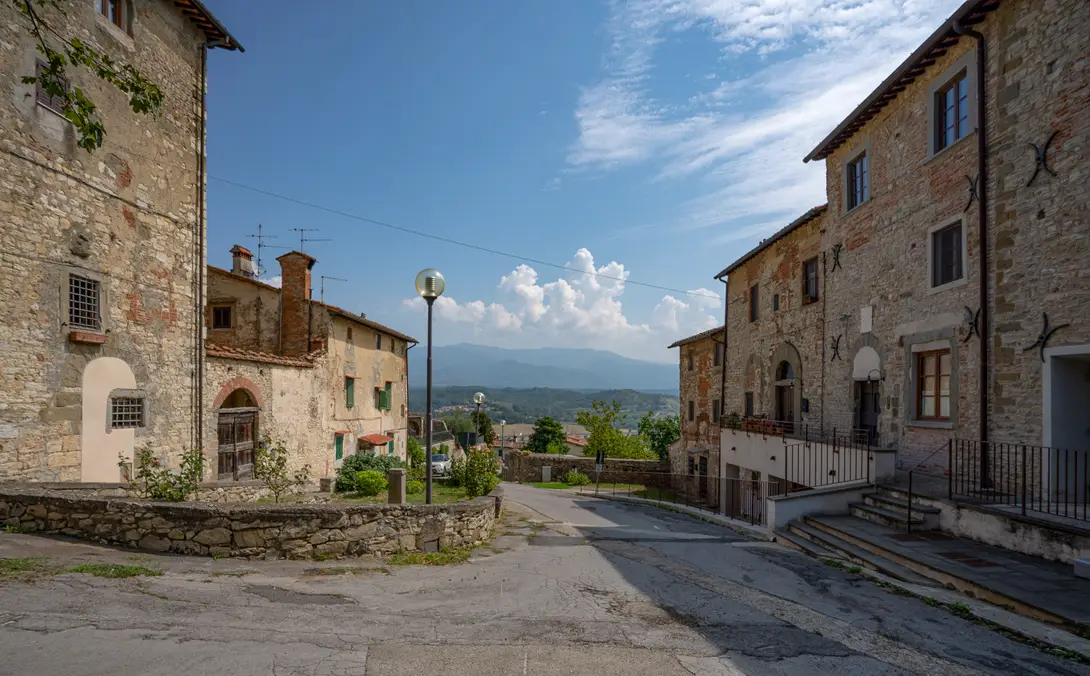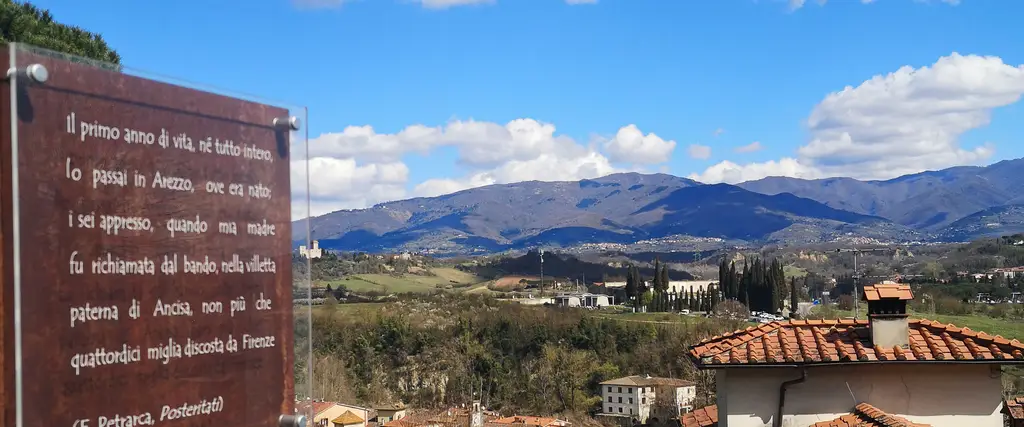
On the way of the Incisa Castle
The route starts from the old town of Incisa and, through the ancient via Romea, leads to the Castle in which the small community grew. During the walk you find truly evocative panoramic viewpoints and curious installations that bear some verses taken from the Canzoniere by Francesco Petrarca or other works of the poet.
After a look at the Town Hall and a visit to the Sant'Alessandro church you can begin the itinerary that starts from piazza della Repubblica. The first stretch corresponds with via Antica Porta and continues, in fact, to the Porta Fiorentina, what was once the entrance of the Castle. From there, looking towards the Arno river, you can see the Bandinella Tower, while continuing uphill, a little further on is the Oratorio delCrocifisso, a single nave 14th-century building that houses works hailing from the churches of the area.
The Castle was built by Florentines in 1224 and called Castel Nuovo dell'Ancisa, back then it had a rectangular plan and was surrounded by walls. Today you can admire the traces of the ancient settlement near Casa Petrarca, the last leg of the route. Built on the boundary wall, it was home to the famous poet in the first years of his childhood; the building located in front is instead the former Palazzo Pretorio of the Ancisa hamlet and nearby you find the remains of the ancient San Biagio church.
Comune Incisa e Figline
Nützliche Informationen
The path is equipped with a handrail and a diffused lighting system, on all night, that signals the climb in an evocative way.
Etappen
Old town of Incisa
The hamlet of Incisa originally developed on the hill, where today still lie the remains, almost indiscernible, of the ancient rectangular-plan Castle and of Casa Petrarca, the place where the poet spent some years of his childhood. Later the village expanded along the Arno river, so much that its name comes from the fact that water has indeed "inciso" (carved) the rock upon which it later was built.
While the Torre della Bandinella rises across the bridge, on the opposite bank you can see the municipal Palace and the Sant'Alessandro church. The tower dates back to the 14th century and is named after the owner family of the castle, nowadays replaced by a farmhouse. Beside it is where the ancient royal roads connecting Florence with Arezzo met.
The municipal Palace was instead built by the architect Pierallini between 1857 and 1864 for the purpose of housing the town hall, the schools, the Chamberlain and the National Guard, while today it houses the administration offices. The building features a small tower upon which are placed a clock and a balcony, on which stands the bronze plaque dedicated to Francesco Petrarca.
Next to the Palazzo lies the Sant'Alessandro church, built in 1786 at the request of the Bishop of Fiesole. The single nave interior preserves the Triptych by the painter Andrea di Giusto with Saint Michael, the Madonna with Child and an Evangelist Saint.
Casa Petrarca
The great writer Francesco Petrarca was born in Arezzo in 1304 and in 1305 he came to Incisa , where he stayed in his grandfather's property until the age of seven , while his father was under a sentence of exile from Florence; the family then moved near Avignon.
The building in which Francesco spent some years of his childhood was part of the ancient Castel Nuovo dell'Ancisa complex, built by the Florentines in 1224 and then fortified later. What is left today of the castle are, converted to residential use, the former Palazzo Pretorio (right in front of Petrarca's home) and the remains of the ancient San Biagio church, under the bell gable supported by a large trapezoidal wall, a symbol of the old Ancisa.
Casa Petrarca has become an exhibition space, a meeting and discussion place, a location hosting exhibits, workshops and training courses thanks to the presence of exhibition facilities and technological equipment.
The historical core of Incisa is connected with the life of the town by an ancient walkway, starting from piazza della Repubblica with via Antica Porta and continuing up to Casa Petrarca. Along the way you can look at unusual panoramic views and find some quotes out of the Canzoniere or other works by the writer.
